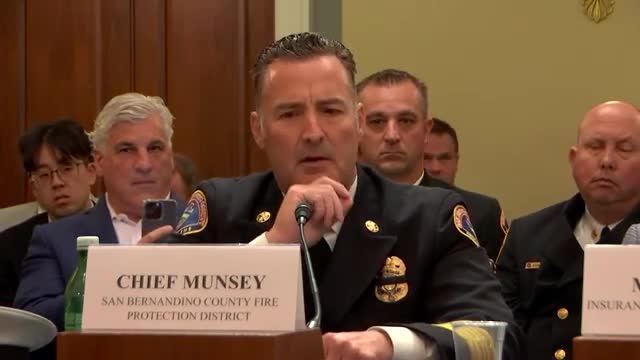Federal Panel Discusses Wildfire Technology Innovations and Local Government Challenges
May 16, 2025 | Natural Resources: House Committee, Standing Committees - House & Senate, Congressional Hearings Compilation
This article was created by AI summarizing key points discussed. AI makes mistakes, so for full details and context, please refer to the video of the full meeting. Please report any errors so we can fix them. Report an error »

In a recent oversight hearing held by the U.S. House Committee on Natural Resources, significant concerns regarding workforce retention and wildfire management were discussed, highlighting the challenges faced by local governments in responding to increasing wildfire threats.
The meeting revealed that many highly qualified personnel have left local fire departments for better-paying jobs, particularly with CAL FIRE, leading to a shortage of experienced staff. This situation has resulted in only 12 out of 25 fire stations being staffed in one jurisdiction last year, which places a heavy burden on local resources. Local governments are responding to over 8,500 calls annually on federal lands without receiving compensation, underscoring the financial strain on these communities.
A key topic of discussion was the need for improved collaboration between federal land management agencies and local partners. Witnesses expressed frustration over federal focus on outdated projects rather than current community needs, which could better protect against wildfires.
The hearing also introduced the Wildfire Technology Demonstration, Evaluation, Demonstration and Optimization (Demo) Act, aimed at fostering partnerships between federal agencies and private entities developing wildfire technologies. This initiative seeks to create pilot programs that allow for the testing of innovative solutions at scale.
Industry experts highlighted promising advancements in wildfire management, including early detection systems and AI-enabled modeling that can predict fire behavior. These technologies could enhance situational awareness and improve response times during wildfire incidents. Additionally, innovations in rapid suppression methods, such as autonomous aviation and robotic mastication, were discussed as potential game-changers in wildfire mitigation efforts.
Participants emphasized the necessity for policy reforms to encourage public-private partnerships, ensuring that all levels of government can effectively utilize these emerging technologies. The consensus was clear: as wildfire threats grow, so too must the strategies and tools available to combat them. The hearing concluded with a call for continued legislative support to expand pilot programs and integrate innovative solutions into wildfire management practices.
The meeting revealed that many highly qualified personnel have left local fire departments for better-paying jobs, particularly with CAL FIRE, leading to a shortage of experienced staff. This situation has resulted in only 12 out of 25 fire stations being staffed in one jurisdiction last year, which places a heavy burden on local resources. Local governments are responding to over 8,500 calls annually on federal lands without receiving compensation, underscoring the financial strain on these communities.
A key topic of discussion was the need for improved collaboration between federal land management agencies and local partners. Witnesses expressed frustration over federal focus on outdated projects rather than current community needs, which could better protect against wildfires.
The hearing also introduced the Wildfire Technology Demonstration, Evaluation, Demonstration and Optimization (Demo) Act, aimed at fostering partnerships between federal agencies and private entities developing wildfire technologies. This initiative seeks to create pilot programs that allow for the testing of innovative solutions at scale.
Industry experts highlighted promising advancements in wildfire management, including early detection systems and AI-enabled modeling that can predict fire behavior. These technologies could enhance situational awareness and improve response times during wildfire incidents. Additionally, innovations in rapid suppression methods, such as autonomous aviation and robotic mastication, were discussed as potential game-changers in wildfire mitigation efforts.
Participants emphasized the necessity for policy reforms to encourage public-private partnerships, ensuring that all levels of government can effectively utilize these emerging technologies. The consensus was clear: as wildfire threats grow, so too must the strategies and tools available to combat them. The hearing concluded with a call for continued legislative support to expand pilot programs and integrate innovative solutions into wildfire management practices.
View full meeting
This article is based on a recent meeting—watch the full video and explore the complete transcript for deeper insights into the discussion.
View full meeting